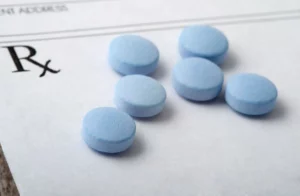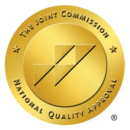Adderall Addiction Treatment in New Jersey
While Adderall is very effective in treating attention and sleep disorders when misused, it is very easy to develop an addiction. Learn more.
Approved by the U.S. Food and Drug Administration (FDA), doctors often prescribe Adderall to people that suffer from issues with attention, mental disorders, hyperactivity, or sleep.
As a central nervous system stimulant, Adderall can help people that struggle with their mental health focus. On top of increasing your level of focus, Adderall can make you feel a euphoric sensation after taking it. This is because Adderall binds to norepinephrine, dopamine, and epinephrine neurotransmitter receptors in the body.
Norepinephrine is a receptor in the brain that helps with your cognitive functioning by allowing you to concentrate and stay focused. Dopamine is a receptor in the brain that acts as a reward system and thus makes you feel moods of happiness and satisfaction. Epinephrine is a receptor in your adrenal gland that increases your heart rate, blood pressure, muscle strength, and sugar metabolism.
The norepinephrine, dopamine, and epinephrine receptors all make human beings feel good and rewarded in some shape or form. Because of this fact, when an individual engages in Adderall abuse, Adderall can be very addictive. Adderall is a Schedule II controlled substance under the Controlled Substances Act. Schedule II controlled substances are substances that have a high potential for misuse that can lead to severe psychological or physical dependence. Due to how addictive Adderall is, there is a huge demand for the treatment for Adderall addiction.
What Is Adderall?
 Adderall is a prescription stimulant made out of prescription amphetamine and dextroamphetamine. As a stimulant, Adderall speeds up certain bodily processes. Doctors prescribe Adderall in the form of an oral medication, although some people who misuse Adderall crush it up and snort it.
Adderall is a prescription stimulant made out of prescription amphetamine and dextroamphetamine. As a stimulant, Adderall speeds up certain bodily processes. Doctors prescribe Adderall in the form of an oral medication, although some people who misuse Adderall crush it up and snort it.
What Is Adderall Used For?
Adderall is a stimulant used to treat mental disorders attention deficit disorder (ADD), attention deficit hyperactivity disorder (ADHD), and sleep disorders such as narcolepsy. When used in its proper dosage, Adderall is good at treating these specific mental health disorders because of the ability this medication has to help calm behavior and increase people’s ability to focus and remain alert.
Doctors can prescribe Adderall to children and adults. Because many of the people that cannot control their ADD or ADHD are children, a large portion of the people whom doctors prescribe Adderall are children. The fact that children are prescribed Adderall is one of the reasons why many people are deceived into thinking that it is a safe medication to engage in Adderall abuse.
Oftentimes students who are overachievers and want to focus and stay alert more so that they can do better in their academics start engaging in Adderall use. Once someone who does not have an Adderall prescription starts taking Adderall in a risky manner or someone who does have an Adderall prescription starts taking a higher dosage than prescribed, that person has a high chance of developing an addiction to Adderall prescriptions.
Other Forms of Stimulants Prescribed to Treat Attention Disorders
 When used properly, stimulants are the most effective form of medication for treating mental health attention disorders. There are countless studies and research that prove how effective stimulants can be when it comes to improving people’s sense of attention.
When used properly, stimulants are the most effective form of medication for treating mental health attention disorders. There are countless studies and research that prove how effective stimulants can be when it comes to improving people’s sense of attention.
Stimulants are great for treating attention disorders because of the way that they bind with reward and feel-good receptors in the brain and body. This is especially true when it comes to increasing levels of dopamine. Dopamine is associated with rewarding feelings of pleasure, motivation, attention, and movement. Thus, boosting such a receptor through stimulants helps increase focus and concentration, which simultaneously decreases hyperactivity and impulsivity.
While Adderall is arguably the most used stimulant medication for treating ADD and ADHD, there are other stimulants a person with these disorders can use. Ritalin and Dexedrine are other well-known stimulants that doctors prescribe to people with attention disorders.
Stimulants used for ADHD can come in two forms. These two forms are short-acting stimulants and long-acting stimulants. Short-acting stimulants reach their full effect within several hours and thus must be taken 2 -3 times a day. Long-acting, or extended-release, stimulants can last for 8-12 hours and thus, only need to be taken once a day.
Signs of Adderall Addiction
Many signs indicate that you or someone you know has an addiction to Adderall. Some of these signs may come in the form of lifestyle and behavioral changes, while others may come in the form of physical symptoms. Prescription stimulants can cause serious substance abuse. Our treatment centers can assist with drug abuse and substance abuse treatment. Here at Discovery Institute, our treatment facilities provide professional treatment programs.
Lifestyle Signs of Addiction to Adderall
If you or someone you know is going to great lengths to quicken the effects of their Adderall, that could be a sign of prescription drug addiction. For example, someone who suffers from being addicted to Adderall may take a higher Adderall dose than what the doctor prescribed. A person looking to quicken the effects of Adderall may even crush and snort the medication. Willingness to manipulate and hurt others such as family members to get more Adderall is also a lifestyle sign of being addicted to Adderall.
One form of manipulation that often comes with a substance addiction to Adderall is “doctor shopping.” Doctor shopping is a term used to describe someone going to different doctor offices and pharmacies to fill multiple prescriptions of Adderall.
If you are suffering from an Adderall addiction, you may start to become secretive about hiding your addiction habits. Another sign of an increasing addiction to Adderall is no longer taking care of yourself because all of your energy is being used towards thinking about Adderall, or how to get ahold of it. These are considered Adderall addictive qualities in Adderall addicts. If the person engaging in the prescription amphetamine lives with family members, these are signs to look out for.
Once your substance use disorder causes you to exhibit such reckless behaviors, you may stop attending to your life’s responsibilities in general. Spending all your money on Adderall is also a sign of being addicted to Adderall. Our rehab center can assist young adults and various ages as we treat ADHD through our treatment process. When a professional begins rendering medical advice to the substance abuser and it’s not being accepted, a treatment provider is the next step.
Behavioral Signs of Addiction to Adderall
There are many behavioral changes that people associate with addiction to Adderall. One of these behavior changes is sudden excitability or talkativeness. Because Adderall is a stimulant, someone that uses Adderall in a risky manner may start to become overly alert to the point where it translates into excessive excitability. This excessive excitability then often turns into overtalking.
While someone who has an addiction to Adderall may have sudden bursts of excitement and talkativeness, misusing such a strong stimulant can also cause that person to later crash and develop random bouts of excessive fatigue. People suffering from this substance addiction may also exhibit excessive daytime fatigue because their use of Adderall is causing them to have problems falling asleep at night. Our treatment program strives for exceptional Adderall treatment through every treatment provider.
Another behavioral sign of someone addicted to Adderall is mood swings in general. For example, a person with this addiction could have sudden bouts of anger, aggression, and mania.
Excessive misuse of Adderall can also start to mess with the way people’s brains normally function. As a result, people with these addictions sometimes start to have memory loss and incomplete thoughts. Our addiction center is here to assist you with this addiction.
Excessive misuse of Adderall can even cause you to start to become disoriented all the time. Due to the effect, excessive use can have on your digestive system, excessive misuse of Adderall can also cause you to have a loss of appetite. Adderall rehab; inpatient rehab can strive to make reaching recovery meaningful.
Physical Signs of Addiction to Adderall
There are countless physical signs of an addiction to Adderall. These signs include:
- Abdominal pain
- Chest pain
- Vomiting/nausea
- Dry mouth
- Hoarseness
- Digestive issues
- Diarrhea
- Constipation
- Increased heartbeat
- Shortness of breath
- Changes in sex drive
- Numbness in arms and legs
- Body twitches
- Slowed or slurred speech
- Dizziness
- Hives or rashes
- Peeling skin
- Vision problems
- Excessive weight loss
- High blood pressure
- Paranoia
CONTACT US
Find out how we can help
Our compassionate counselors are standing by to answer any questions you may have. After helping thousands of people over the last 50 years, we have the resources to help you and your family and all your individual needs.
Withdrawal Symptoms of Adderall
Whenever you are suffering from addiction to Adderall, you will experience withdrawal symptoms whenever you are detoxing or not taking as much of the medication as you’ve become accustomed to.
There are numerous withdrawal symptoms of Adderall. Many Adderall withdrawal symptoms are similar to the physical signs of addiction to Adderall, except more severe.
List of Adderall Withdrawal Symptoms
- Restlessness
- Insomnia
- Increased heart rate
- Dizziness
- Fatigue
- Weight loss
- Body tremors
- Seizures
- Panic attacks
- High blood pressure
- Paranoia
- Blurry vision
- Dry mouth
- Depression
- Suicidal thoughts
- Adderall cravings
- Irritability
- Anxiety
- Extreme hunger
- Mood swings
- Phobias
How Long Does Adderall Stay In Your System?
 How long Adderall stays in your system varies depending on what bodily system you are trying to detect Adderall. Other factors that influence the amount of time it takes to detect Adderall in your body include your urine pH and your weight.
How long Adderall stays in your system varies depending on what bodily system you are trying to detect Adderall. Other factors that influence the amount of time it takes to detect Adderall in your body include your urine pH and your weight.
The dosage of Adderall that you took, the frequency at which you would consume Adderall, and the last time that you took Adderall also affect how long the drug will stay in your body.
You can detect Adderall in urine anywhere from 72 – 96 hours after you take the medication. In blood, Adderall is detectable for up to 46 hours, and in hair, Adderall is detectable for up to 3 months.
Adderall Addiction Treatment
Receiving Adderall addiction treatment is important because trying to quit on your cold turkey could lead to dangerous conditions like cardiac arrest, or even death. To receive proper substance abuse addiction treatment, you must first enroll in a detox and recovery program.
During your detox from Adderall, your doctor will lower your dosage of Adderall intake at a gradual pace. Lowering someone’s dosage of a medication at a slow pace is called tapering. Tapering helps you avoid having deadly situations due to quitting Adderall too abruptly.
During this time you will also have to learn how to manage your withdrawal symptoms without the assistance of medication. The reason why you cannot use other medications to help with your Adderall addiction is that there are no approved medications for Adderall addiction treatment. Our treatment centers can assist you with drug abuse addiction.
When it comes to recovery programs for an Adderall addiction, inpatient treatment is the best option. This is because inpatient rehab provides you with a safe environment where you can undergo constant therapy and support groups. After you are done tapering your Adderall use, detoxing, and receiving treatment, you should then seek medical evaluations and assessments to make sure that you are alright.
Once the substance is out of your system, you should attend psychotherapy and behavioral therapy. Cognitive-behavioral therapy is a good choice when it comes to therapy options for someone in recovery from an Adderall addiction. It is also wise to attend both individual therapy and group therapy when receiving Adderall addiction treatment.
Once you detox, Adderall treatment, and therapy are all completed at our treatment center, you should have an aftercare plan. An aftercare plan is a plan of precautionary things that you are going to do after your treatment is done to help you maintain your sobriety. One of the best forms of an aftercare plan is attending 12-step meetings after attending our treatment center.
Receive Help at Our Addiction Center at Discovery Institute
Discovery Institute is dedicated to providing quality clinical care and evidence-based treatment practices to each person staying in our facility. That way they can receive the help that they need.
We are also dedicated to decreasing the negative impact addiction has on the family members and friends of people suffering from drug addiction. We do this by offering individual, group, and family therapy at our Institute.
To receive treatment at Discovery Institute, fill out an admission form on our website, or speak with one of our specialists now.
Dr. Joseph Ranieri D.O. earned his BS in Pharmacy at Temple University School of Pharmacy in 1981 and His Doctorate Degree in Osteopathic Medicine at the Philadelphia College of Osteopathic Medicine in 1991. He is Board Certified by the American Board of Family Medicine and a Diplomate of the American Board of Preventive Medicine Addiction Certification. Dr. Ranieri has lectured extensively to physicians, nurses, counselors and laypeople about the Disease of Addiction throughout New Jersey and Pennsylvania since 2012.



